Ashley James challenges historical accounts that cast out Black suffragettes, commercialize liberation, and romanticize slavery in Off The Record, her first show at the Guggenheim Museum.
“I’ve always been interested in history and the historical record as both a container for history, but also symbolic of it,” James tells ESSENCE.
Her previous work in academia reflected on and investigated work coming from across the diaspora. At the Yale University Art Gallery, Studio Museum in Harlem, and, most recently, the Brooklyn Museum, she showcased exhibitions that sparked ideas about who deserved to be revered. “I have a Black studies background and this idea of questioning history and the reception of history is really key to Black studies.”
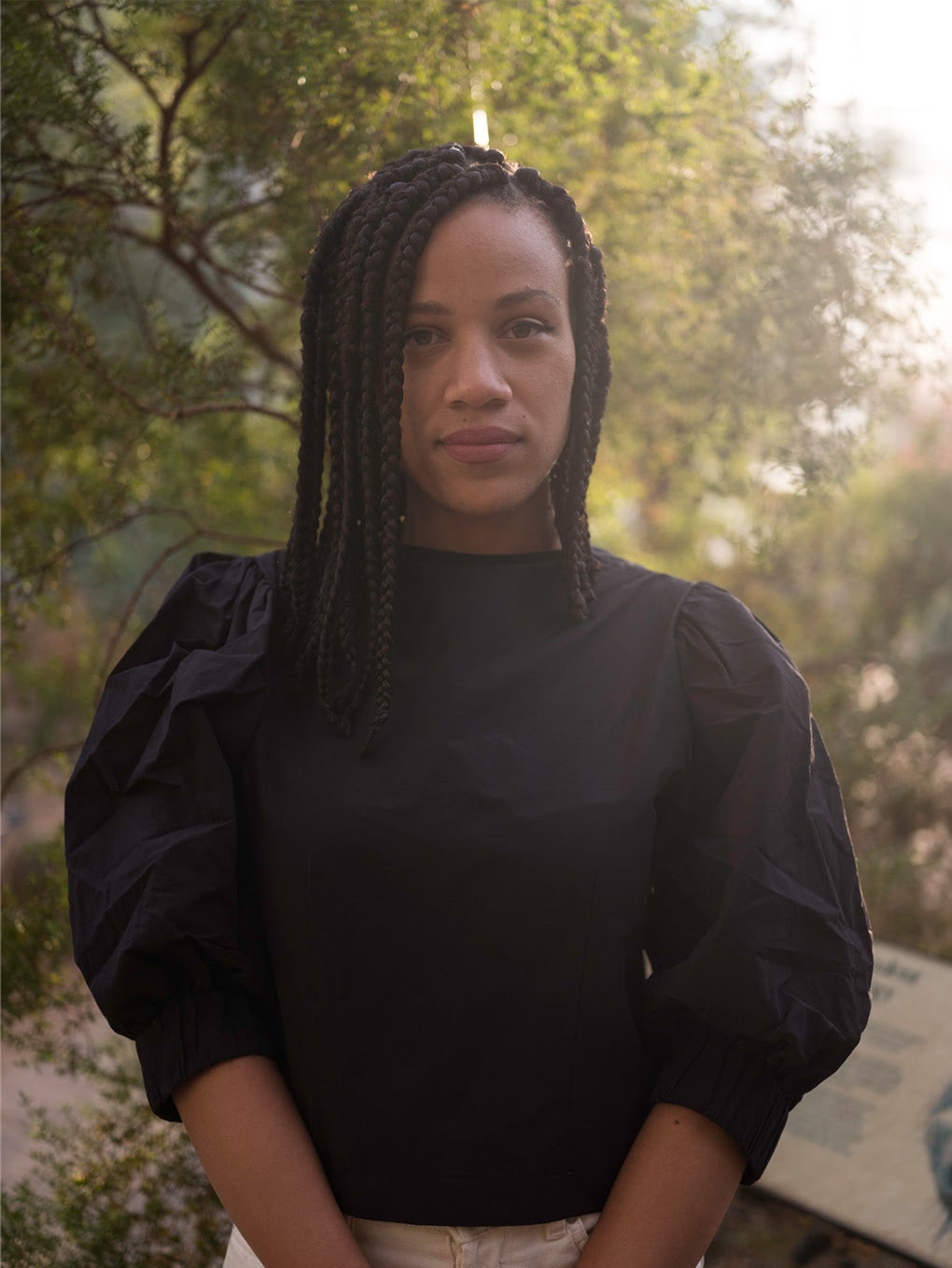
Off The Record features work from 13 artists. Sadie Barnette, Sarah Charlesworth, Sara Cwynar, Leslie Hewitt, Tomashi Jackson, Glenn Ligon, Carlos Motta, Lisa Oppenheim, Adrian Piper, Lorna Simpson, Sable E. Smith, Hank Willis Thomas, and Carrie Mae Weems each respond to absences and slants present in the “single record of truth.” James sees their statements as a way “to speak back to a dominant history that is reflective of specific people in power — the victors, specific institutions, and all of the values that they carry.”
Each artist has a distinct approach to questioning historical consensus. Weems rejects racist tropes with color and language while Piper exposes rhetoric that permitted Addison Rae to eclipse Jalaiah Harmon. Willis Thomas reminds us that when money is at stake even corporations will admit Black is beautiful.
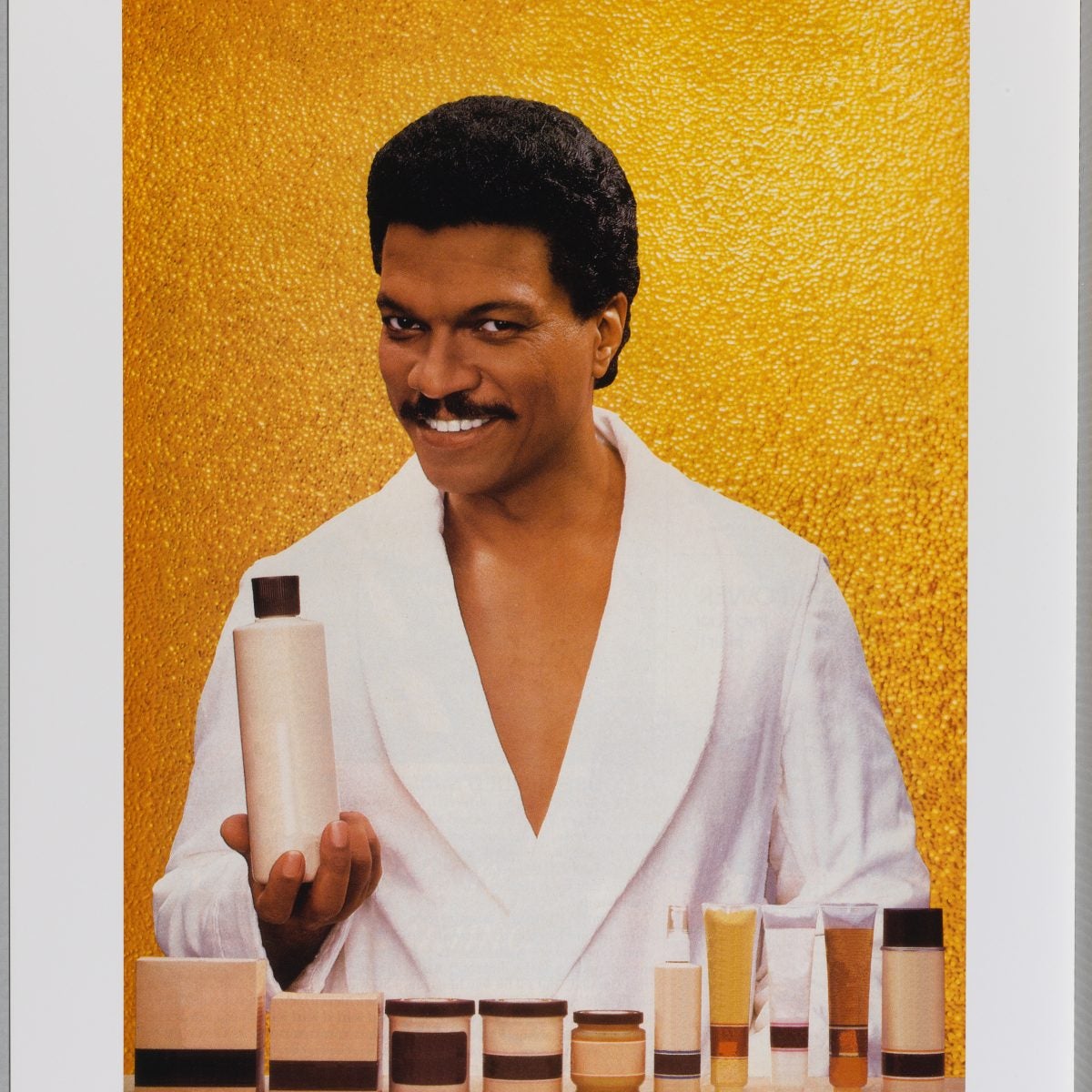 Hank Willis Thomas, Something To Believe In, 1984/2007. Chromogenic print, image: 30 1/8 x 21 1/2 in. (76.5 x 54.6 cm); frame: 36 9/16 x 27 15/16 x 2 in. (92.9 x 71 x 5.1 cm), edition 5/5. Solomon R. Guggenheim Museum, New York, Purchased with funds contributed by the Photography Committee 2011.13. © Hank Willis Thomas
Hank Willis Thomas, Something To Believe In, 1984/2007. Chromogenic print, image: 30 1/8 x 21 1/2 in. (76.5 x 54.6 cm); frame: 36 9/16 x 27 15/16 x 2 in. (92.9 x 71 x 5.1 cm), edition 5/5. Solomon R. Guggenheim Museum, New York, Purchased with funds contributed by the Photography Committee 2011.13. © Hank Willis Thomas
“On a basic level being skeptical of those historical records is key to having a kind of defense, even if it’s as simple as saying, ‘you’re not reporting this correctly,” said James, who is the museum’s first full-time Black curator. The show’s journey forces you to pause at young Anita Hill reminding us the mainstream muffled Tarana Burke until rich white women began screaming “me too.”
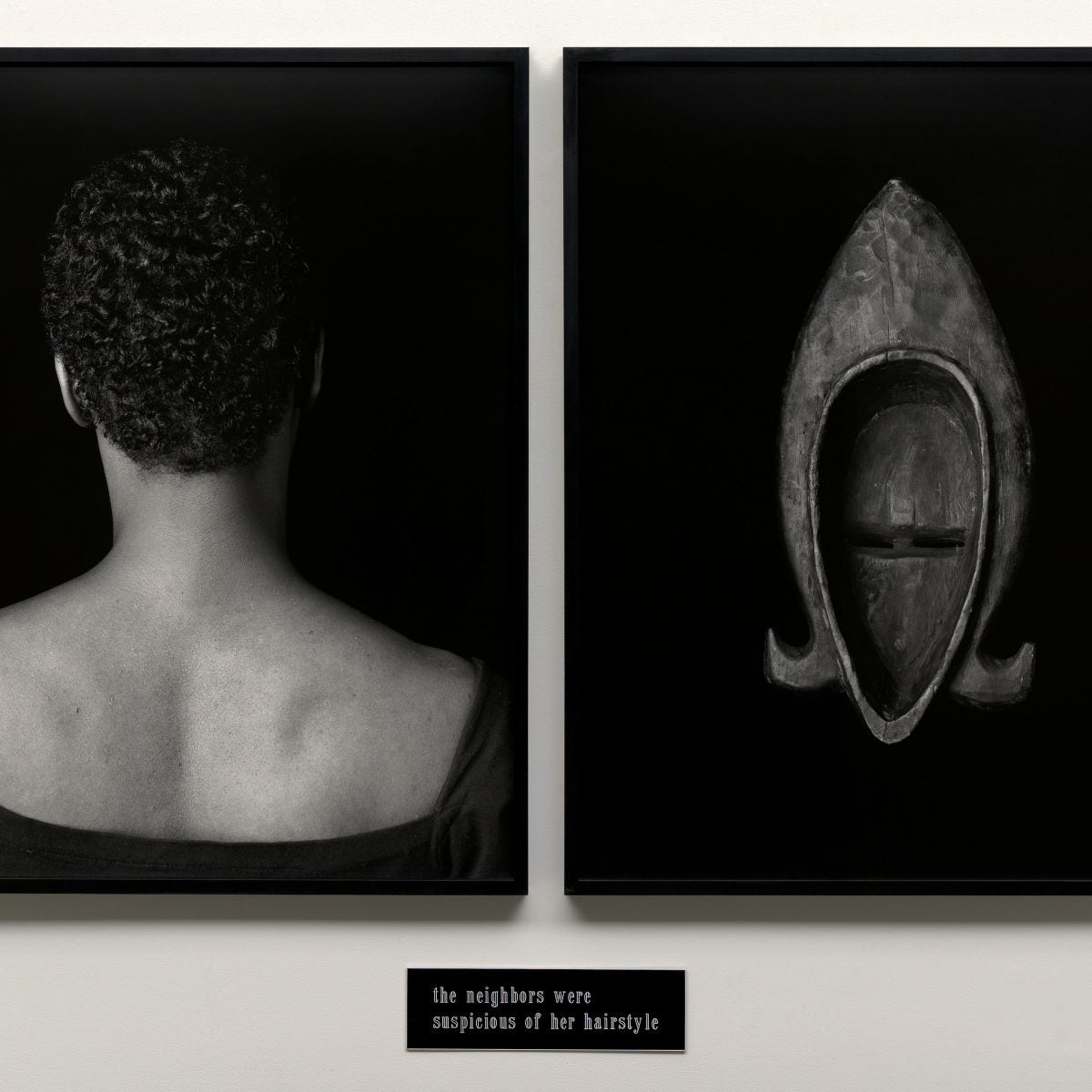 Lorna Simpson, Flipside, 1991. Gelatin silver prints and engraved plastic plaque, diptych, 51 1/2 x 70 in. (130.8 x 177.8 cm) overall, edition 2/3. Solomon R. Guggenheim Museum, New York, Purchased with funds contributed by the Photography Committee 2007.32. © Lorna Simpson
Lorna Simpson, Flipside, 1991. Gelatin silver prints and engraved plastic plaque, diptych, 51 1/2 x 70 in. (130.8 x 177.8 cm) overall, edition 2/3. Solomon R. Guggenheim Museum, New York, Purchased with funds contributed by the Photography Committee 2007.32. © Lorna Simpson
“Who’s on the record is also something that has guided my thinking about the question of documentation overall and finds its way in the show too,” James adds. “That is certainly a question that is key to the practice of Lorna Simpson. She’s thinking about the positioning of Black women in her photography. Black people and Black women have been written in the historical record in a specific way that needs its own kind of redress. I think that the artists in the show really are thinking of different political histories, social histories, personal histories.”
Barnett’s personal history appears in the form of select pages from COINTELPRO reports on her father, Rodney Barnette. A portion of the five pages on state-sanctioned violence against the Black Panther Party contains details of an attempt to sabotage his employment by disclosing that he dared cohabitate with a person he wasn’t married to. Attitudes about race, class, and religion live between the fluorescent pink speckled summary. Its clinical wording was drafted by an institution that saw only one path to family. “There really isn’t an objective truth, which is a main theme,” says James.” Context does not appear on the pages necessitating the importance of paying attention to all that the record cannot say. No single record should have the power of saying everything.”
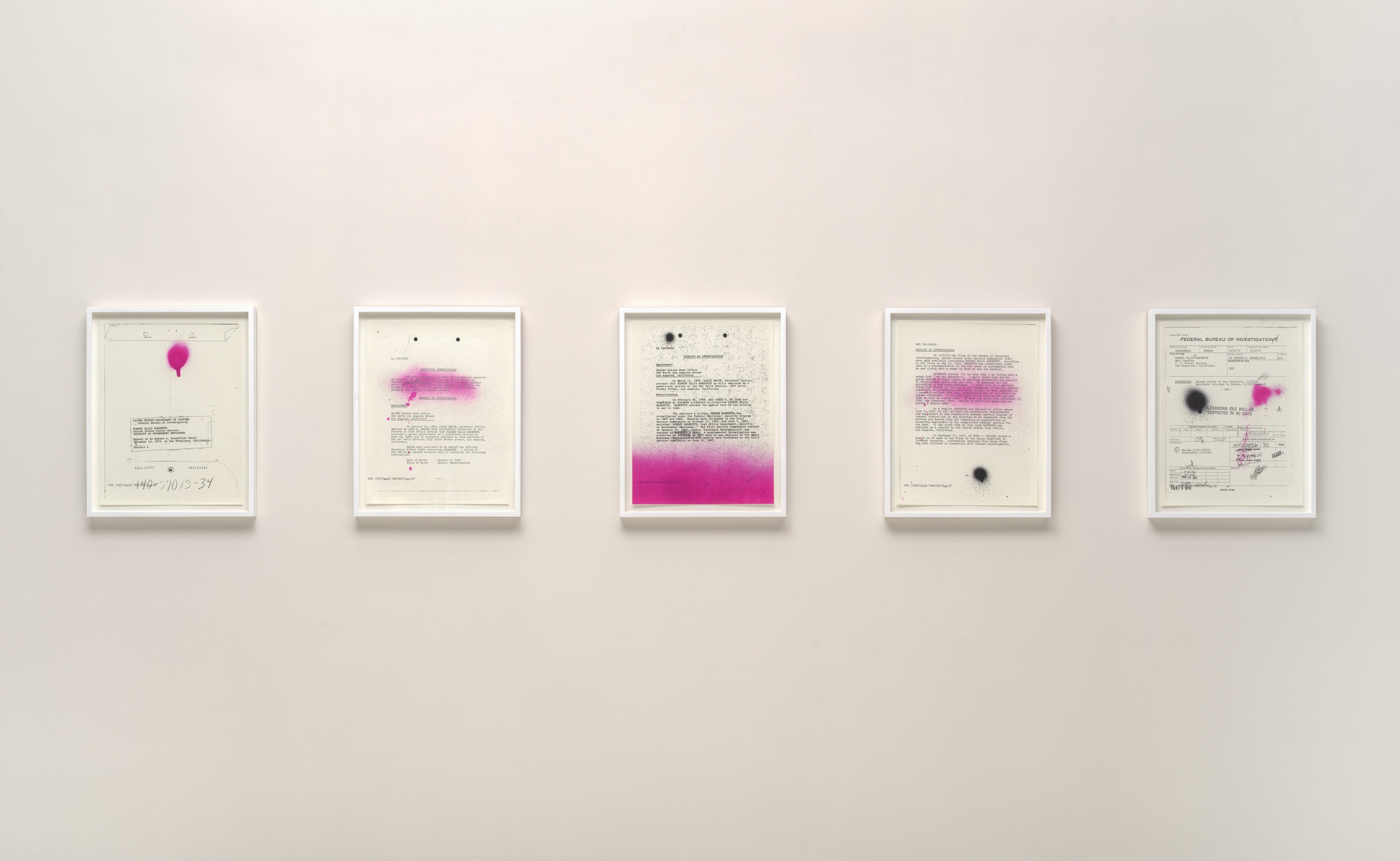 Sadie Barnette, My Father’s FBI File; Government Employees Installation, 2017. Five archival pigment prints, 22 x 17 in. (55.9 x 43.2 cm), edition 3/5. Solomon R. Guggenheim Museum, New York, Purchased with funds contributed by the Young Collectors Council, with additional funds contributed by Peter Boyce II 2018.57. © Sadie Barnette. Photo: Courtesy Fort Gansevoort
Sadie Barnette, My Father’s FBI File; Government Employees Installation, 2017. Five archival pigment prints, 22 x 17 in. (55.9 x 43.2 cm), edition 3/5. Solomon R. Guggenheim Museum, New York, Purchased with funds contributed by the Young Collectors Council, with additional funds contributed by Peter Boyce II 2018.57. © Sadie Barnette. Photo: Courtesy Fort Gansevoort
The Freedom of Information Act request Barnette filed to acquire the records from the FBI took so long to fulfill they arrived as scans. “She expected it to come in this banker’s box, just piles and piles of papers. But in fact, they were digital files. She got a USB stick,” says James. “There’s this dissonance between what you think of the record and the fact that actually a lot of time has passed.”
The contrast between physical and virtual records is felt in Off The Record. Charlesworth’s newspaper imagery and Smith’s colorbook silk screens evoke thoughts of tablets and timelines. The audio tours hosted on Soundcloud as patrons stroll from Leslie Hewitt to the nearby Jackson Pollock NFT debates rage on. “This sense of kind of the digital pulling at the past record, the paper record is a tension that is kind of an underlying tension of the show,” says James before noting that inconsistencies in media coverage and academic journals didn’t cease with 5G.
“Digital has offered so much in terms of the democratization of just public space and I guess I would say the same for the record. On the other hand, there’s a lot of instability to the digital and to the internet.”
Vine’s death and Tumblr’s exodus prove that today’s thriving ecosystem can be tomorrow’s empty landing page. “As we know, it’s not some utopic space either,” James says. “In the same way that the paper record is a reflection of the values of various institutions and stakeholders, the internet is too and so that means that it can never really truly be this space of freedom and possibility.”
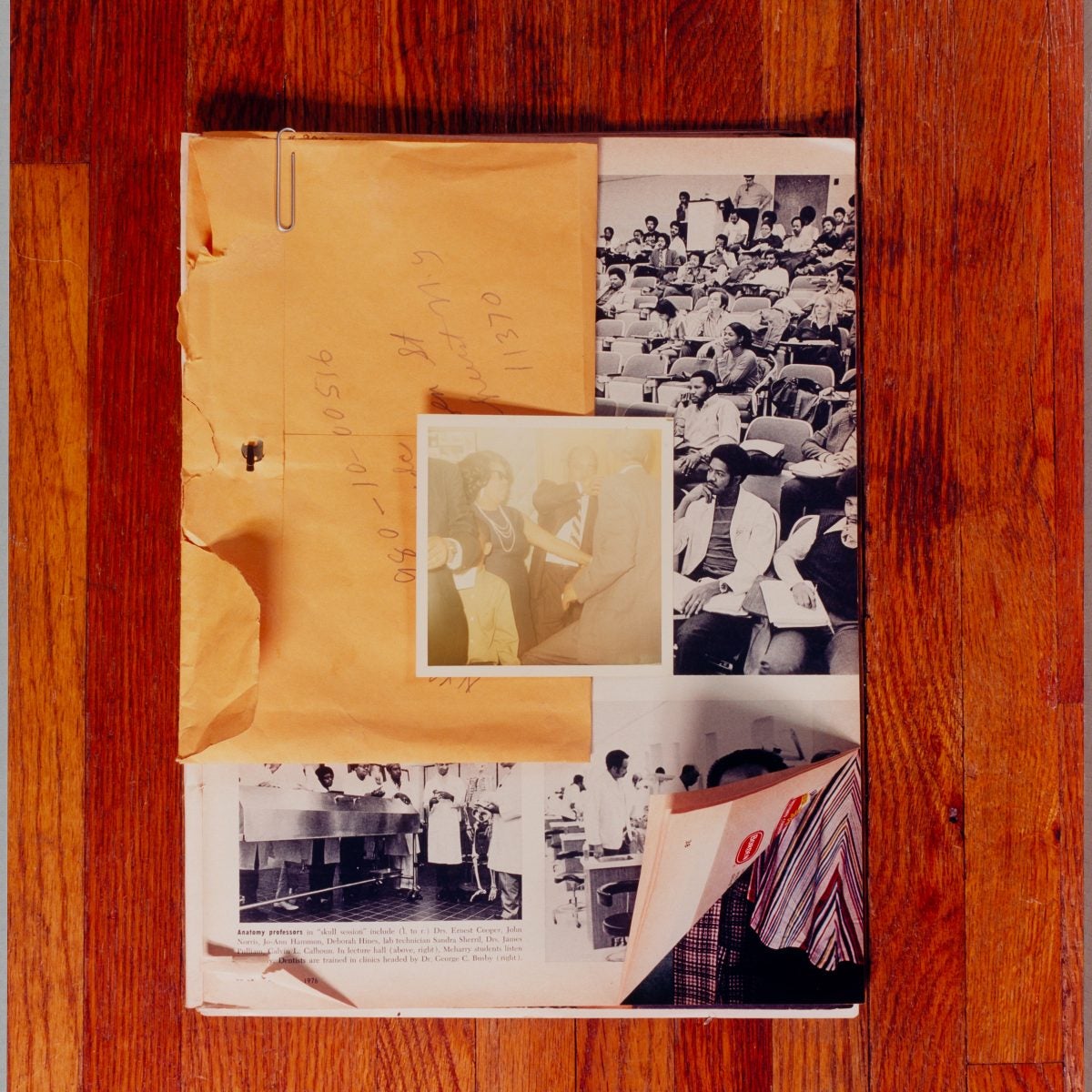 Leslie Hewitt, Riffs on Real Time (3 of 10), 2006–09. Chromogenic print, 30 x 24 inches (76.2 x 61 cm), edition 5/5. Solomon R. Guggenheim Museum, New York, Purchased with funds contributed by the Photography Committee 2010.55. © Leslie Hewitt
Leslie Hewitt, Riffs on Real Time (3 of 10), 2006–09. Chromogenic print, 30 x 24 inches (76.2 x 61 cm), edition 5/5. Solomon R. Guggenheim Museum, New York, Purchased with funds contributed by the Photography Committee 2010.55. © Leslie Hewitt
As she developed the show she took an analog approach to reviewing her own essays, research, and the dissertation that earned her a PhD from Yale. “In some ways the show is very much an extension of me because I have to admit to myself that I’m a paper person. I keep all of my old papers, anything that’s written,” she shares. “There’s something about working out ideas on paper that it just feels better.”
James wants audiences to see everything from apartment applications to census records as artifacts. “This show is focused on materials that literally govern all of our lives in some forms, we all deal with records at various levels and in many, many ways on literally a daily basis,” she says.
She also hopes viewers will “consider, the ways that they carry information, beyond what is just written, beyond what is merely pictured.”
As she puts it, “These things are so commonplace that they feel like they’re stabilized, but they’re not, they’re constructed.”
James, whose 2019 appointment at the Guggenheim created national headlines, is not unaware of her personal place in the record. Her position has the potential to feel weighted, but it’s a “joyous kind of pressure,” she says. “A commitment to various audiences is something that I’m quite able and happy to kind of to carry because to me that means that the work is true and important. I do this work because I want to share these artists, these ideas with many communities.”
The fervor surrounding her accomplishments doesn’t preoccupy her because as a student of history she knows they, and the institutions where they took place, are only part of the story. She is careful to remind us, “There are many art worlds.”
Learn more about Off The Record here.
TOPICS: Ashley James Guggenheim Off The Record
The post Ashey James Want Us To Look ‘Off The Record’ In New Exhibit appeared first on Essence.


0 Commentaires